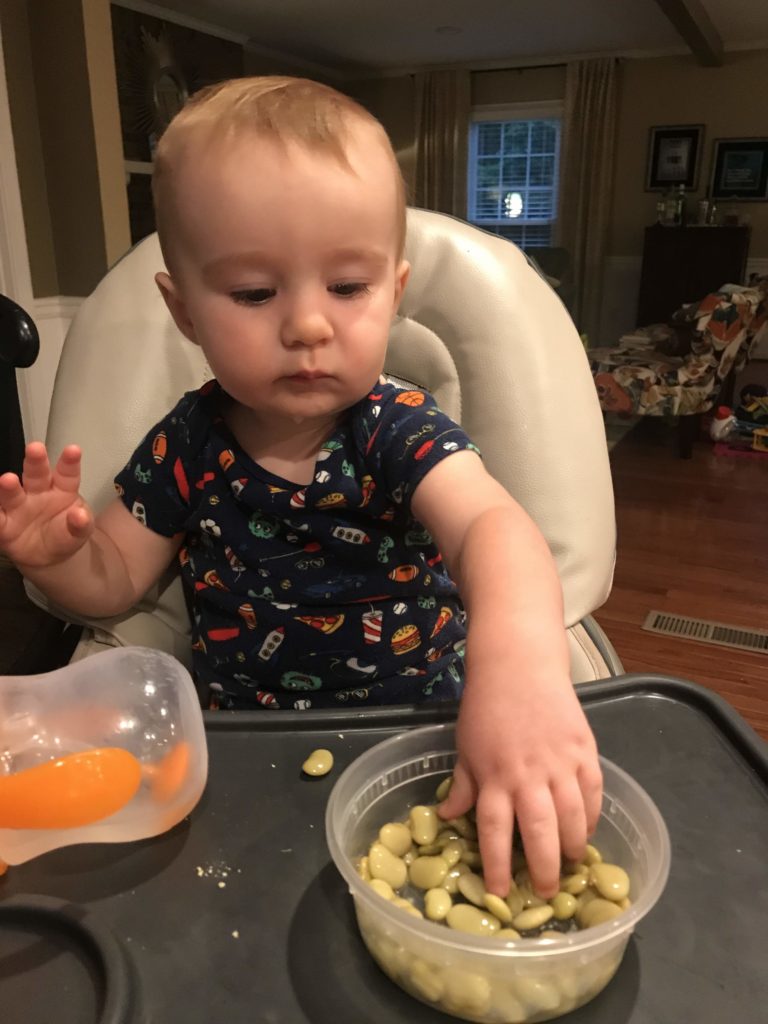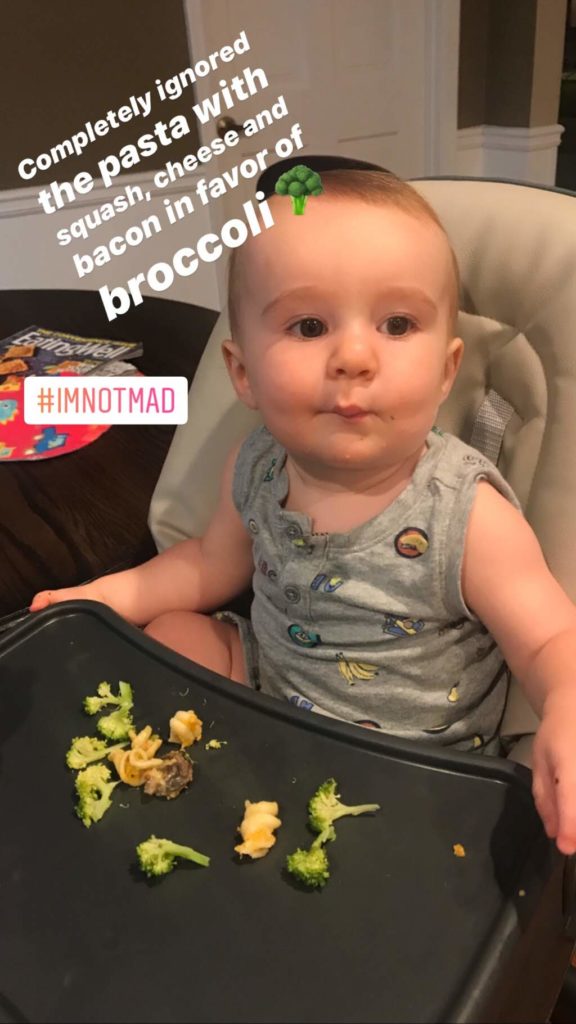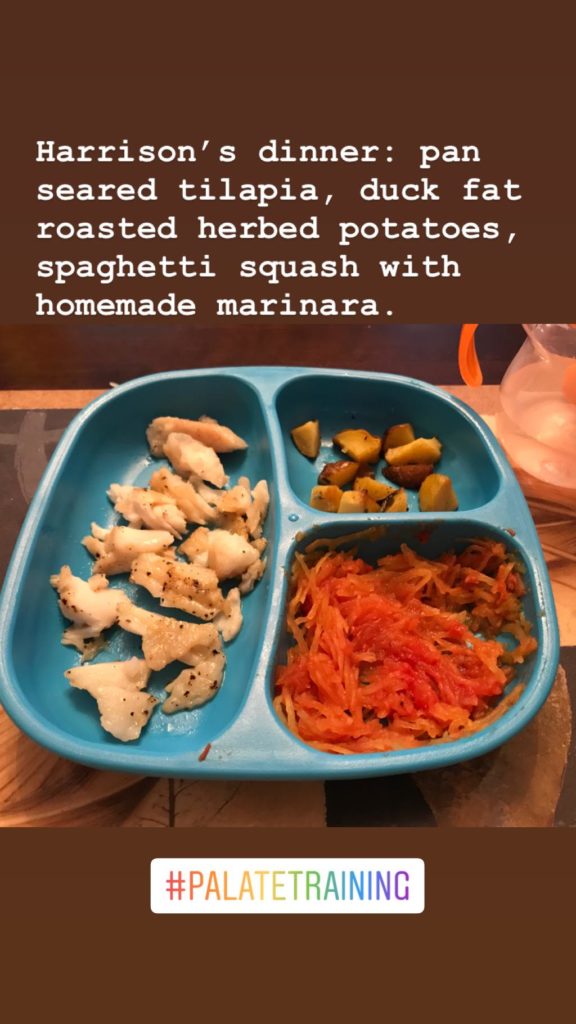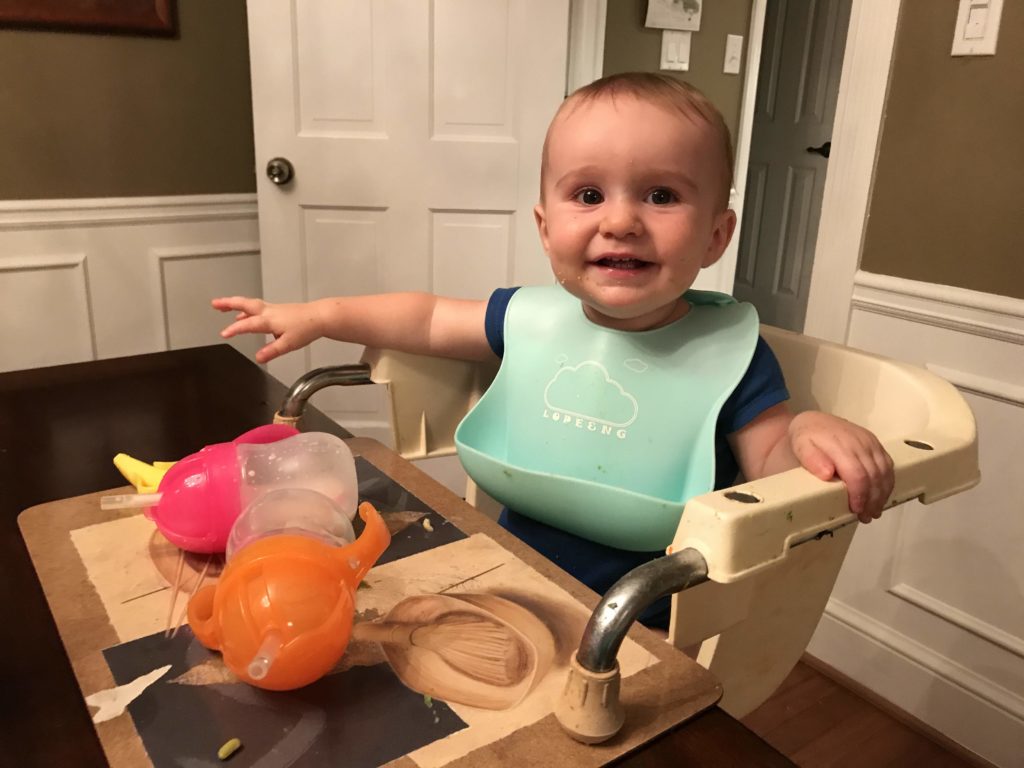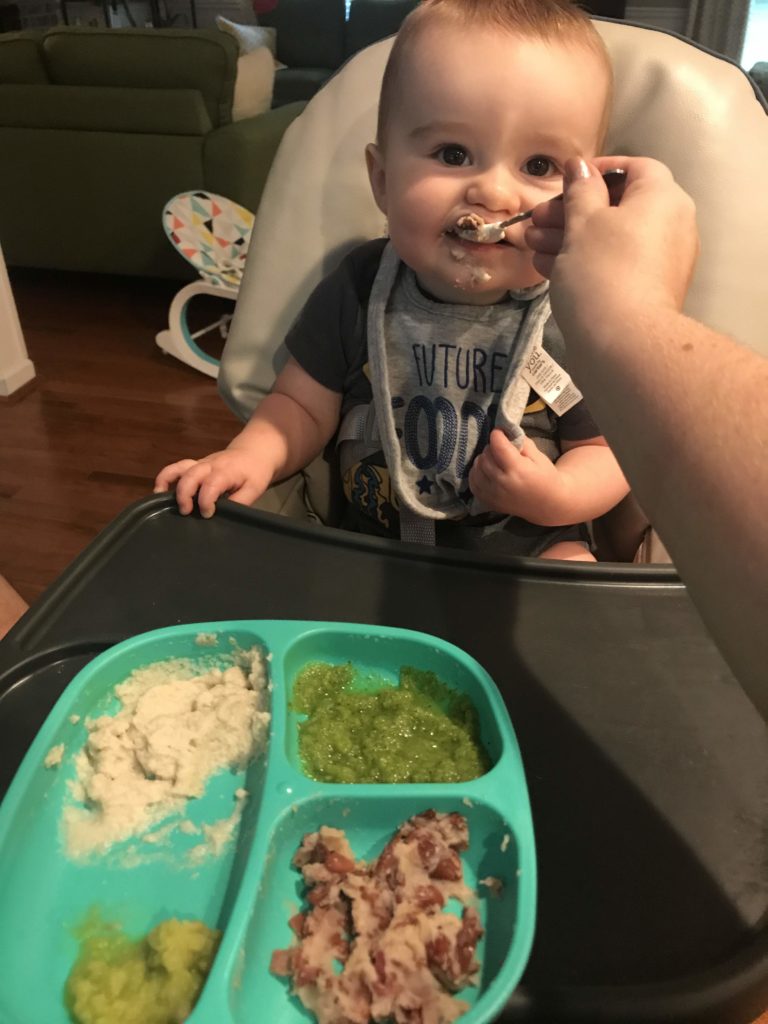 Since chronicling Harrison’s foray into real foods the past 8 months, I’ve gotten many questions about Harrison’s meals and how we got him to eat so well and with such variety. Growing up, my brother was an extremely picker eater. My dad was always picky and later in life has gotten even worse. I’ve seen so many parents struggle and struggle and struggle with feeding their toddlers and kids anything but complete junk food. I knew I wanted a different way. We saw what Sean’s cousins did with their two kids – palate training – and were in awe when their nine-month old ate a vegetable curry from a market in London.
Since chronicling Harrison’s foray into real foods the past 8 months, I’ve gotten many questions about Harrison’s meals and how we got him to eat so well and with such variety. Growing up, my brother was an extremely picker eater. My dad was always picky and later in life has gotten even worse. I’ve seen so many parents struggle and struggle and struggle with feeding their toddlers and kids anything but complete junk food. I knew I wanted a different way. We saw what Sean’s cousins did with their two kids – palate training – and were in awe when their nine-month old ate a vegetable curry from a market in London.
Ultimately, we had to have a plan. Our world has so much to do with food. Cooking is my hobby and passion and trying new foods is such an important experience for both me and Sean.
I was also concerned about nutrition and the addiction to sugar. It’s in EVERYTHING and 100% impossible to avoid. But I believed there had to be a way for a child to eat a variety of foods – not just the “beige foods” (bread, chicken fingers, french fries, macaroni and cheese, hotdogs, etc.) and sugar. Enter Palate Training.
Palate training is based on the idea that, by introducing foods in a certain way, we can teach babies to fully taste and enjoy mild grains and vegetables before having sweeter fruits and salty snack, meats, etc. There is a nutritionist on Instagram who shared this program @DrLauraLefkowitz, – she doesn’t post anymore and there is no website with a full list or process but we followed what Sean’s cousins did and also scrolled far back on her Instagram for more details.
I’ve gotten MANY comments and questions about palate training so I thought I’d put together . a blog post about what we did those first few pivotal months and our ongoing approach as Harrison grows into a toddler.
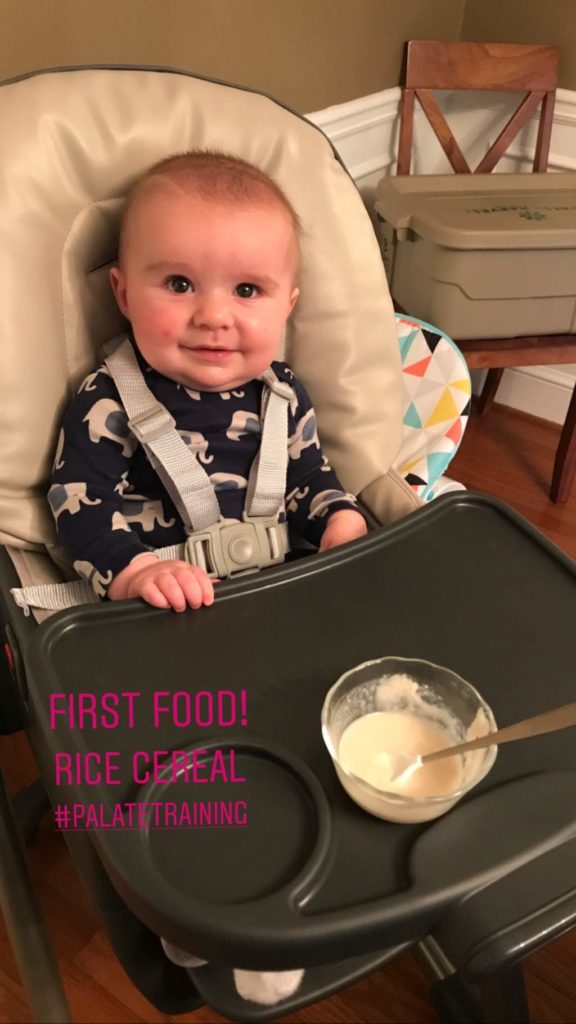
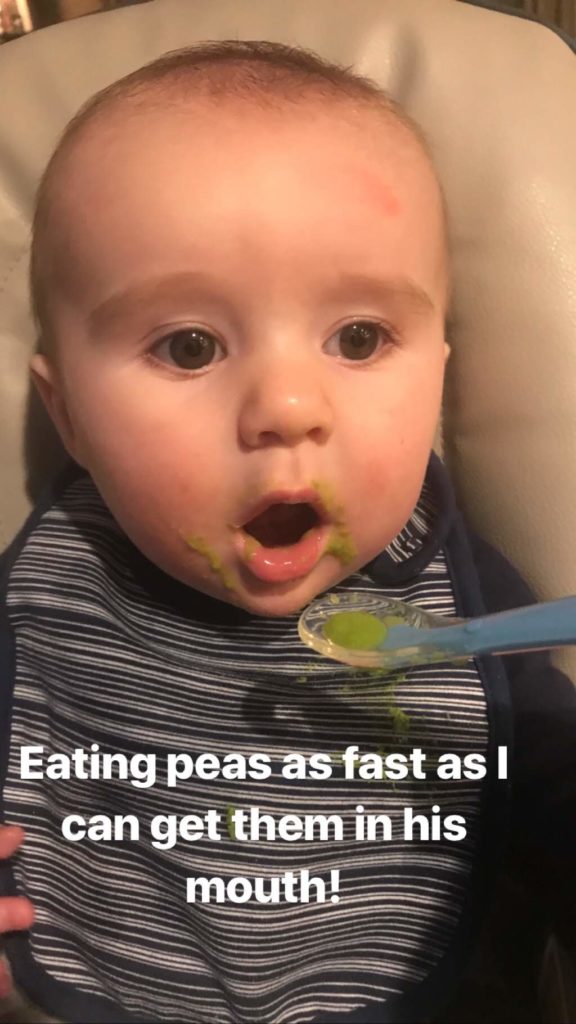
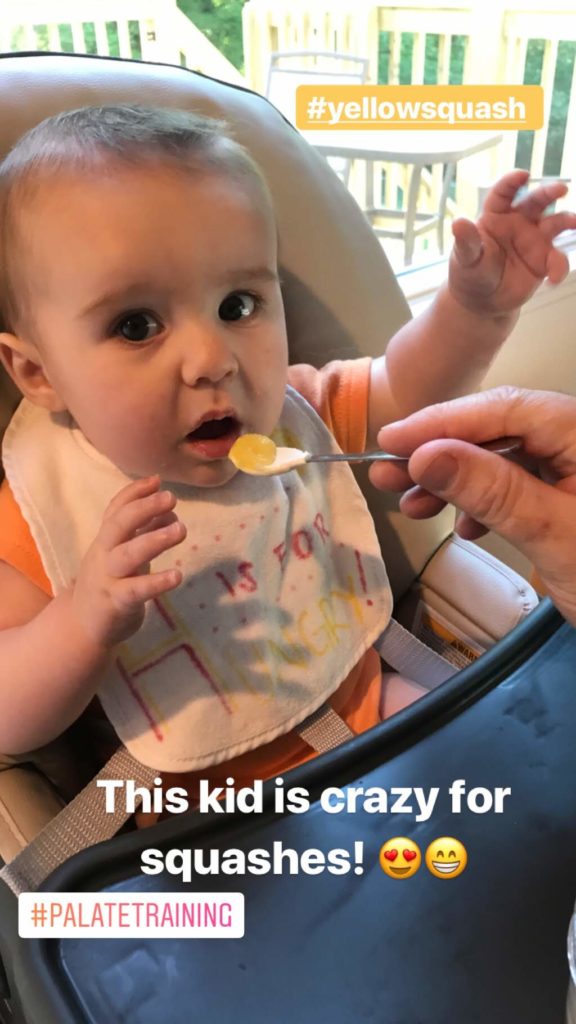
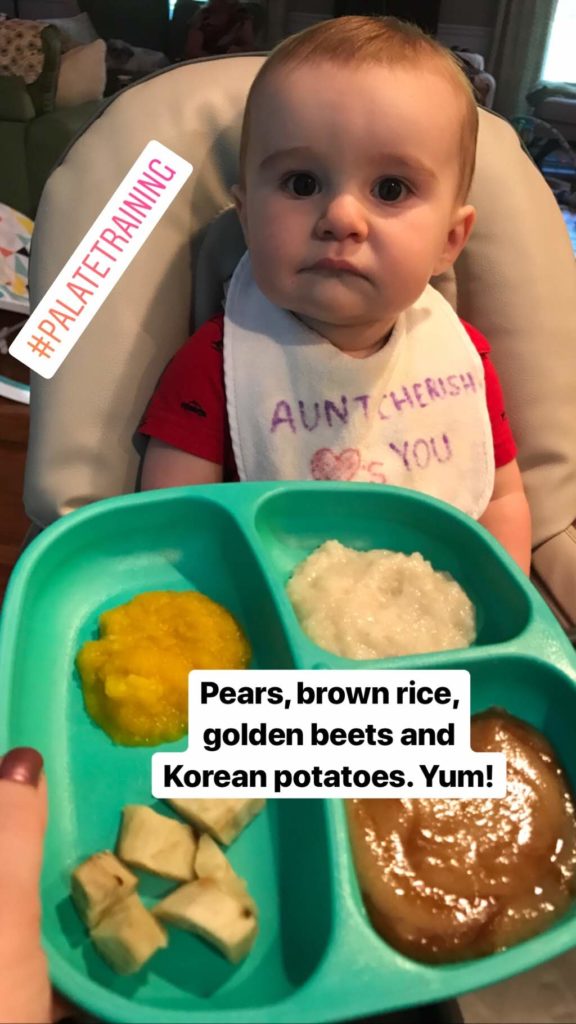
There are a few key things to keep in mind as you start out:
- Think about baby’s sensitive taste buds – until they start solids they’ve only had breastmilk or formula which has a very mild taste.
- Don’t overwhelm their taste buds at first! Ease them into solids and choose very mild, simple flavored grains and vegetables.
- Don’t start with sweet or salty foods. It’s too much for baby and having sweet things just sets them up to always prefer that and ignore other things on the plate.
- DO NOT mix fruit with vegetables or grains. Your baby will not learn what vegetables taste like if they’re always mixed with apples, pears, oranges, etc.
- Mixing vegetables and grains is ok once baby has tried and accepted each food on its own.
- Wait at least three days before introducing a new food so you can watch for any kind of allergic reactions, etc.
- Please do not give your child pouches. They’re always composed of vegetables mixed with fruit which goes completely against the palate training concept and they can affect children’s appetites because the act of chewing releases enzymes and works with the brain to let them know they’re full. The way purees are sucked from the pouches often leaves it sitting along the gums which can cause dental issues. Also, sucking is not helping your child learn how to eat – from a spoon, by chewing, etc. Please read this post from Children’s Healthcare of Atlanta for more on this.
If you decide palate training is right for you, consider making your baby’s food. Store bought foods – even organic ones – always have things added in. The vast majority of foods can be steamed in a steam basket on the stove or in the microwave, then pureed in a blender, food processor or nutri bullet.
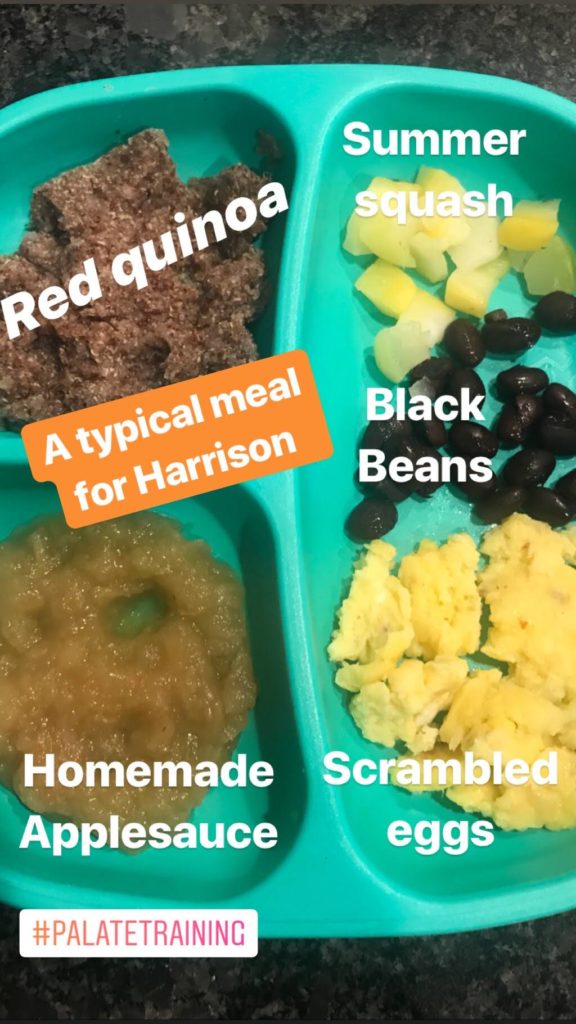
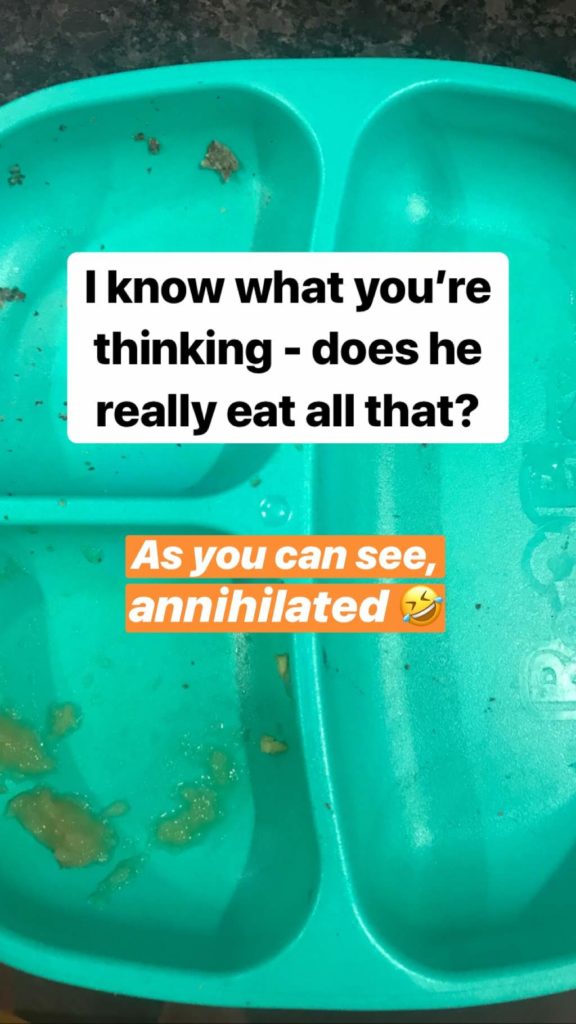
I’m a working mom and my husband works as well. I made all of Harrison’s food so this is just encouragement that you can do it, too! I would spend about an hour or so on a Sunday, steaming and pureeing veggies and grains, packing them into Tupperware and freezing whatever we weren’t going to feed Harrison over the next couple of days.
We followed the order below for foods. I used fresh vegetables as it made sense but other things, like peas, I bought frozen and pureed.
- Brown rice cereal – I recommend buying organic rice, putting a cup into the blender to make a powder/flour and then cooking that with at least 2 cups of water (more as needed to get the right consistency). This is one of the only foods that needs cooked this way.
- Oatmeal – I actually bought the organic powder oatmeal at the store based on the nutritionist’s original recommendations. It worked well because I could add this oatmeal to purees like zucchini that were always watery to help thicken them up a bit.
- Green peas
- Zucchini
- Quinoa
- Carrots
- Butternut squash (or really any squash – yellow, pumpkin, acorn, etc.)
- Pears
- Green peas with fresh herbs like mint, basil, cilantro
- Avocado
- Sweet potato
- Apples/applesauce
- Green beans
- Beats
- Beans
- Mango
- Lentils
